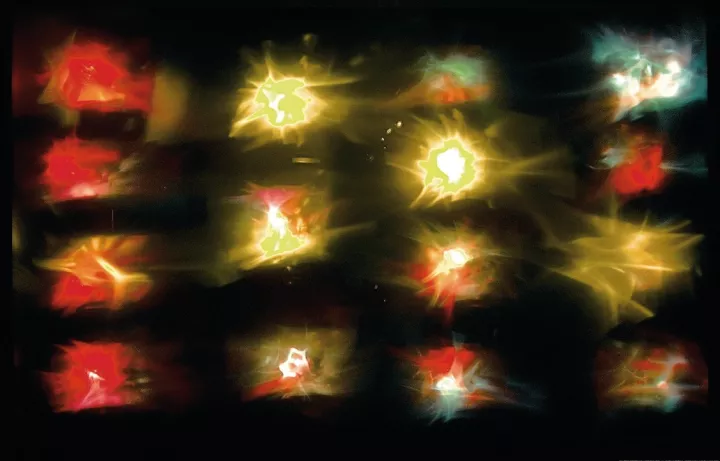
Zoom
Nicolas Schoffer
1912 - 1992
Hungary
Born in Kalocsa, Hongrie.
Died in Paris.
In 1948, Nicolas Schöffer invents spatiodynamic sculpture and builds metallic structures which, powered by electricity, cast lights. He wants to apply art and architecture to every day life, and conceives and ideal metropolis : “the leisure city”. He imagines a suspended metropolis, because the “enjoying system” has to replace the “working system”. He invents shell-houses, touristy and sexual leisure programs, managed by electronic brains. As of 1956, he makes clocks, bricks, spatiodynamic prisms, teleluminoscopes, luminorelaxes, CYSP1, the dancing robot. He builds monumental cybernetic towers (a tower of 52 meters for the light-dynamic show in Liège,1961). From the 1970's, he sets up his dynamic sculptures worldwide and writes some texts and books defining himself a a theorician of the "kinetic art, of sculpture changing it aspect thirty times per second and of the spatial urbanism". In 1988 and 1989, he creates some drawings thanks to the graphic tablet and the computer (Chorégraphics and Ordinagraphics).
Died in Paris.
In 1948, Nicolas Schöffer invents spatiodynamic sculpture and builds metallic structures which, powered by electricity, cast lights. He wants to apply art and architecture to every day life, and conceives and ideal metropolis : “the leisure city”. He imagines a suspended metropolis, because the “enjoying system” has to replace the “working system”. He invents shell-houses, touristy and sexual leisure programs, managed by electronic brains. As of 1956, he makes clocks, bricks, spatiodynamic prisms, teleluminoscopes, luminorelaxes, CYSP1, the dancing robot. He builds monumental cybernetic towers (a tower of 52 meters for the light-dynamic show in Liège,1961). From the 1970's, he sets up his dynamic sculptures worldwide and writes some texts and books defining himself a a theorician of the "kinetic art, of sculpture changing it aspect thirty times per second and of the spatial urbanism". In 1988 and 1989, he creates some drawings thanks to the graphic tablet and the computer (Chorégraphics and Ordinagraphics).
